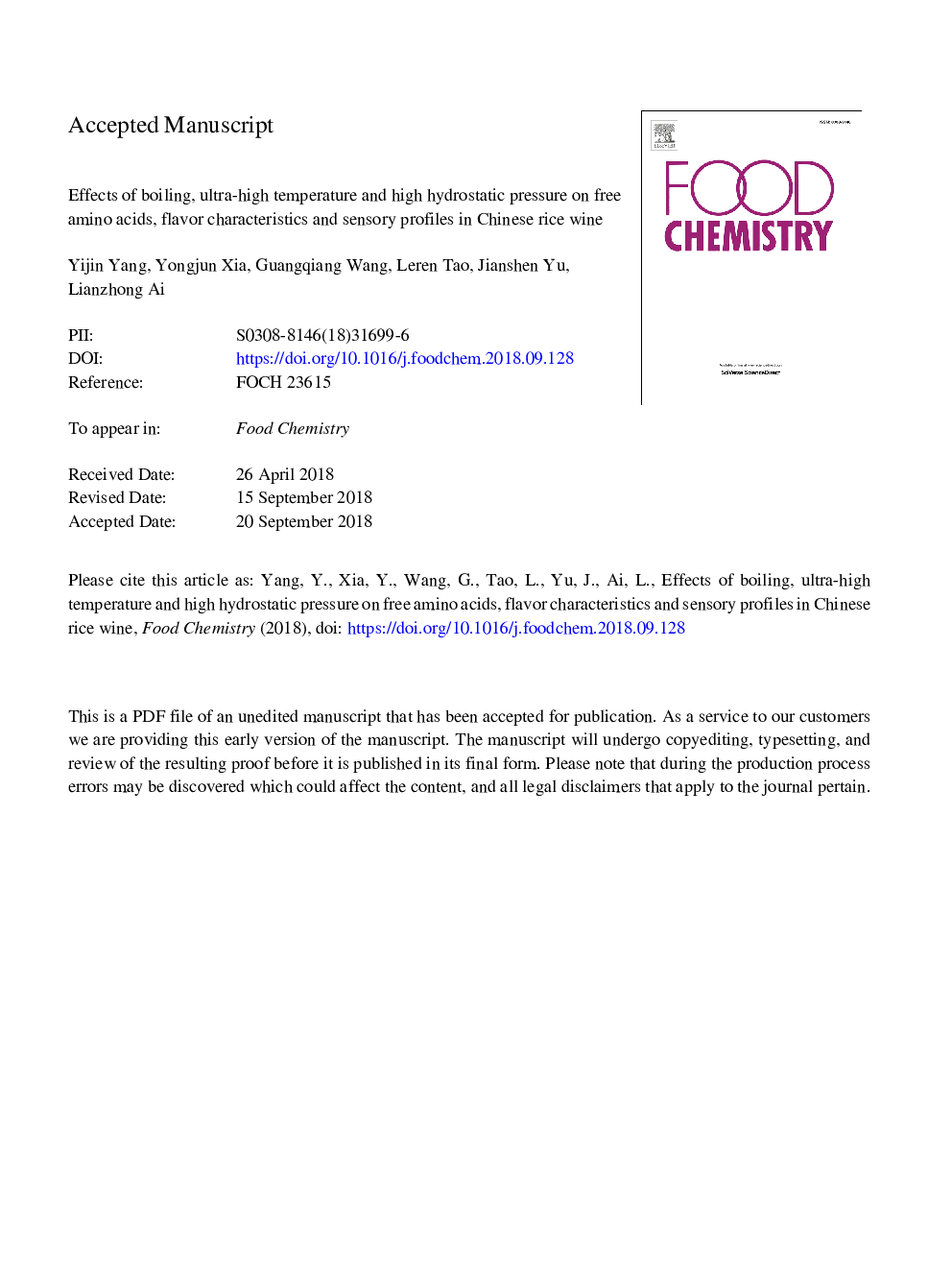| Article ID | Journal | Published Year | Pages | File Type |
|---|---|---|---|---|
| 11027409 | Food Chemistry | 2019 | 31 Pages |
Abstract
Traditional sterilization leads to poor vinosity of Chinese rice wine (CRW). Effects of boiling, ultra-high temperature (UHT) and high hydrostatic pressure (HHP) on CRW quality were investigated. Thermal treatment resulted in a decrease of total free amino-acids (FAA), whereas HHP-treatment caused an increase. However, UHT and HHP treatments had little effect on FAA with sweet and umami-like flavor. HHP-treated CRW contained 7.35% higher content of flavors relative to untreated wine, while thermally-treated CRW revealed 4.68-8.61% losses. Based on principal component analysis, CRW processed at 400 or 600â¯MPa for 10â¯min exhibited similar flavor to the untreated wine, which was highly associated with long-chain fatty acid ethyl esters (C13-C18). Moreover, partial least squares regression demonstrated that sensory attributes of cereal aroma and astringency were highlighted after thermal treatment, while fruit aroma, continuation and full body were dominant after HHP treatment. HHP treatment effectively enhanced the quality of CRW, which could be applied in other alcoholic beverages.
Keywords
Related Topics
Physical Sciences and Engineering
Chemistry
Analytical Chemistry
Authors
Yijin Yang, Yongjun Xia, Guangqiang Wang, Leren Tao, Jianshen Yu, Lianzhong Ai,
